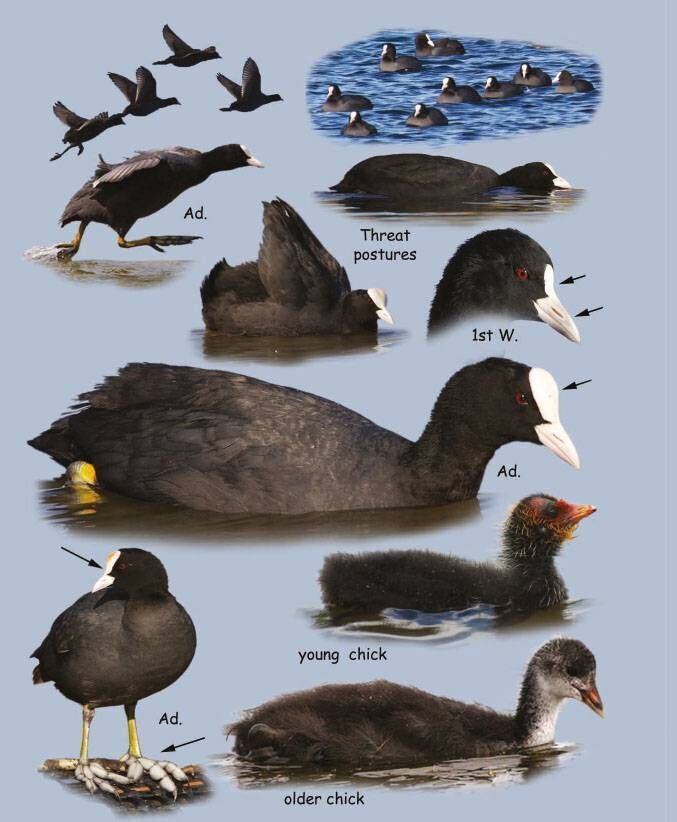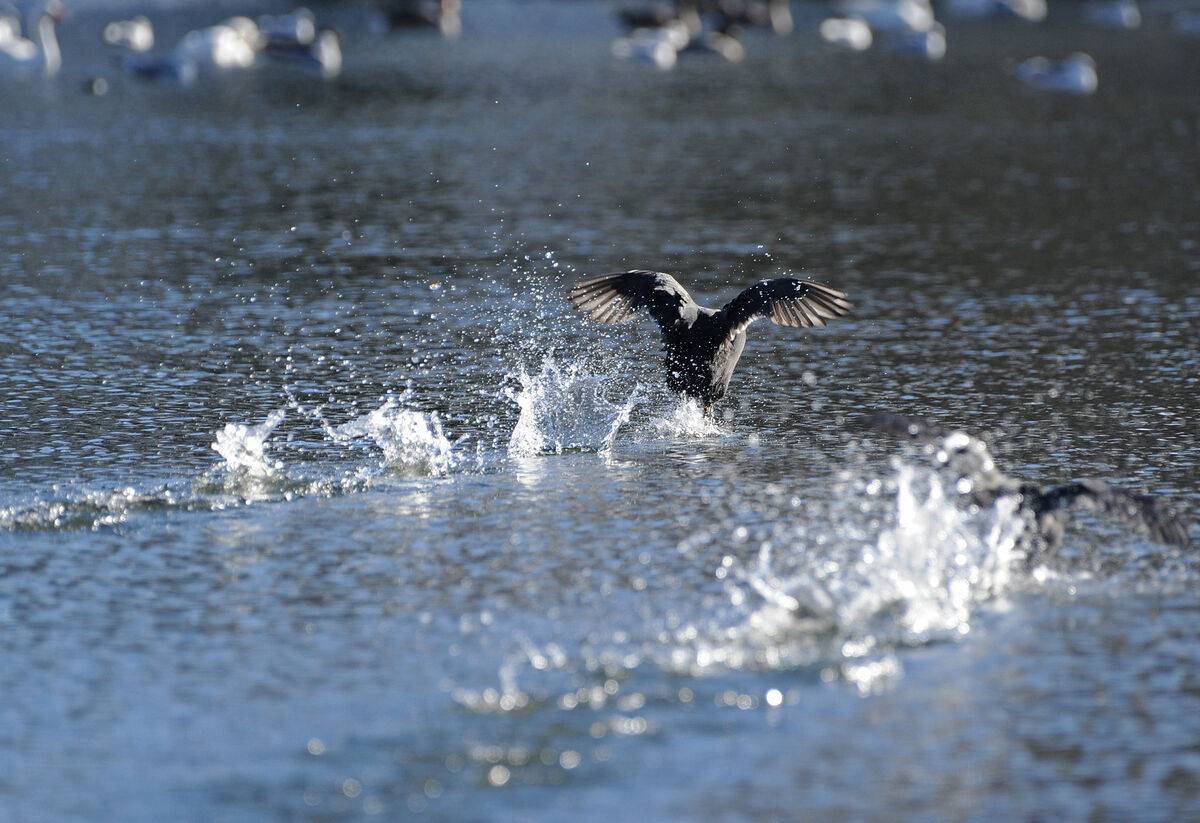Birds of Ireland: Coot

Coots reflected on frozen water at the Lough, Cork. Picture: Denis Minihane
A coot is about 36-40cm long with a wingspan of 70-80cm. They are a common breeding species found here all year round — typically on wetlands.
Smaller than a mallard, both sexes appear similar. Coots can dive quite well.

An adult coot has a conspicuous white beak and forehead shield; black plumage; dark red eye; and large, lobed green-grey feet.
Juvenile coots are paler than adults, especially on the head, neck and breast. Similar to a young moorhen but they lack white on the undertail; downy chicks dark brown with an orange-red head.
A coot in its first winter after hatching looks like an adult but has a smaller forehead shield and a grey tinge to the beak.
In flight coots appear all dark with narrow, white trailing edge to the secondaries.
Their voice sounds include a loud short , repeated mechanically, with several intermittent brief high-pitched nasal whistles.

Binoculars, telescopes and cameras are some of the important tools a birdwatcher uses when identifying and studying birds. Like cars, they range from the very cheap and nasty, via the practical and reliable ‘value for money’ models, right up to incredibly expensive equipment which sometimes functions mainly as a status symbol.
If you do your homework before choosing, you can get a pair of binoculars and/or a telescope that will last you a lifetime, for less than the price of a weekend away.
When it comes to birdwatching, a pair of binoculars should definitely be the next purchase after your identification guide and notebook. Birds have an unfortunate habit of flying away if you get too close. This can be thought of as part of the challenge, or sometimes the frustration, of birdwatching.
The more interested you become in birds and their identification the more apparent it will be that, to learn more about them, you will need to get a closer look, and binoculars are essential to do this without disturbing them.








